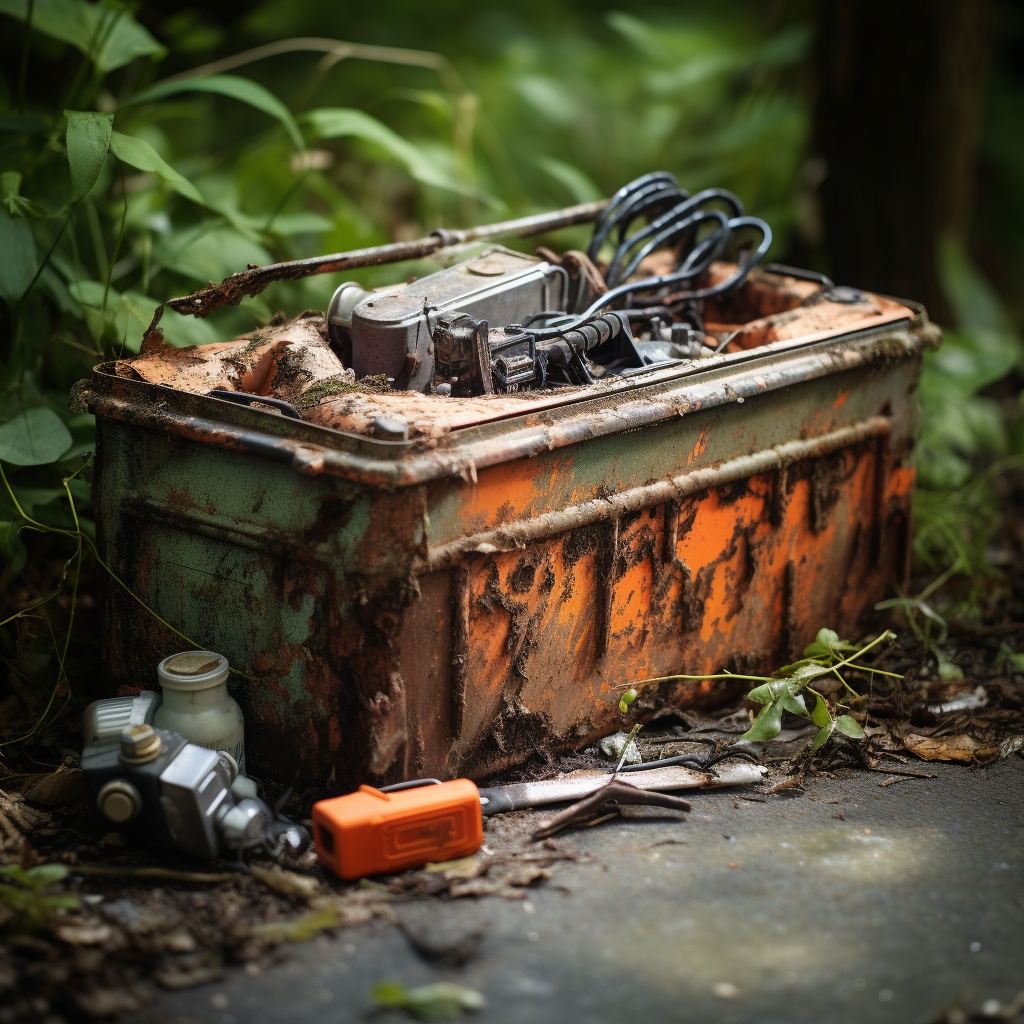Contents
Batteries are crucial components of any vehicle. They provide the power needed to start the engine and run accessories like lights, radio, power windows, etc. However, over time battery posts and connections can corrode due to chemical reactions, dirt, grime, and moisture. Battery corrosion can prevent your car from starting and even damage other electrical components. Thankfully, cleaning car battery corrosion is an easy and inexpensive process you can DIY in less than an hour. With some basic materials and these step-by-step instructions, you’ll have your battery cleaned up and working properly again in no time.
What Causes Battery Corrosion?
There are a few key causes of battery corrosion in vehicles:
- Electrolyte Leakage – The battery contains sulfuric acid which can leak and cause corrosion. Cracks in the battery case allow electrolyte to seep out.
- Dissimilar Metals – The battery posts are made of lead while the clamps and tray are different metals. When exposed to electrolyte, this causes a chemical reaction resulting in corrosion.
- Dirt/Debris – Build up of dirt, grime, battery acid, etc. especially in humid climates can lead to corrosion over time.
- Loose Connections – If battery cable connections are loose, it increases resistance which heats up the metals promoting corrosion.
Dangers of Battery Corrosion
While unsightly, battery corrosion can cause some serious issues if left unchecked:
- Harder Starting – Corrosion increases resistance which makes it harder for your battery to provide enough power to start your engine.
- Electrical Failure – Corroded battery connections can cause shorts, power loss to accessories, and electrical component failure.
- Dead Battery – Severe corrosion can totally disconnect the battery cutting off its ability to charge and function.
- Damage to Nearby Parts – The leaked battery acid can eat through and corrode nearby parts like the battery tray or hold down.
Clearly, cleaning corrosion off your battery promptly is critical to extending its life and ensuring your car runs properly.
Materials Needed for Cleaning Battery Corrosion
Gathering the right supplies makes cleaning corrosion a breeze. You’ll need:
- Baking soda – Creates a chemical reaction to neutralize acid corrosion.
- Water – Mix with baking soda to make a paste. Also used for rinsing.
- Old toothbrush or wire brush – To scrub away corrosion on the posts/clamps.
- Wrenches – For removing battery cables and the battery itself if needed.
- Gloves – To protect your hands from battery acid.
- Safety glasses – For eye protection while cleaning.
- Plastic tray – For holding small parts that are removed.
- Paper towels or rags – For cleaning, drying, and wiping down areas.
- Anti-seize compound – Prevents future corrosion and allows for an easier battery removal next time.
- Battery cleaner spray – Removes stubborn deposits and neutralizes acid.
Step-by-Step Process to Clean Battery Corrosion
With your supplies gathered, follow these steps to thoroughly clean corrosion on your car battery:
Prepare the Area
- Park your car in a well-ventilated area and apply the parking brake. Turn off all accessories.
- Disconnect the negative battery cable first to cut power from the battery.
- Remove any engine covers or air filters that block access to the battery.
Remove the Battery
- Use wrenches to disconnect the positive cable from the battery post. Place cable aside.
- Remove any hold down bracket bolts or J-hooks holding the battery in place.
- Carefully lift the battery out of the tray using the lift handles. Place on a flat surface.
Clean the Battery Posts and Clamps
- Mix baking soda and water to make a paste. Apply to corroded posts and cable clamps.
- Use a wire brush or old toothbrush to scrub the paste and loosen corrosion.
- Use a battery cleaning spray for stubborn deposits. Scrub with a brush.
- Rinse the posts and clamps thoroughly with clean water. Dry with a paper towel.
Clean the Battery Tray and Hold Down
- Use a wire brush to scrub away any corrosion in the battery tray.
- Clean the battery tray with a 50/50 mix of warm water and baking soda.
- Rinse the tray thoroughly with clean water and dry.
- Wipe down the battery hold down bracket to remove dirt and debris.
Reinstall the Battery
- Apply a thin coat of anti-seize compound to the battery posts/clamps.
- Carefully lower battery back into the tray. Do not drop.
- Reinstall hold down bracket and tighten bolts to secure battery.
- Reconnect positive cable to positive post, then reconnect negative cable.
Prevent Future Corrosion
- Clean any corrosion immediately before it worsens.
- Keep terminals clean and covered with anti-seize compound.
- Ensure cable connections are tight to prevent resistance.
- Wash the battery casing periodically with a 50/50 baking soda/water mix.
- Check for cracks in the battery case that can leak electrolyte.
- Keep the battery hold down tight to minimize vibration.
When to Call a Professional
While minor battery corrosion is easy to DIY, it’s best to have a professional handle:
- Severely corroded or cracked battery cases leaking large amounts of acid.
- Corroded side terminals that are difficult to reach and clean properly.
- Corrosion on multiple vehicle systems beyond just the battery.
- Electrical issues like continual dead batteries, dimming lights, or accessory failure.
Conclusion
Corrosion of battery terminals, posts, and clamps is a common issue caused by chemical reactions, dirt buildup, and loose connections. Left unchecked, corrosion can make your vehicle hard to start, create electrical issues, and eventually leave you stranded. Thankfully these step-by-step instructions walk you through properly cleaning your car battery corrosion so you can get your vehicle running properly again. Just be sure to prevent future corrosion with regular battery maintenance.

